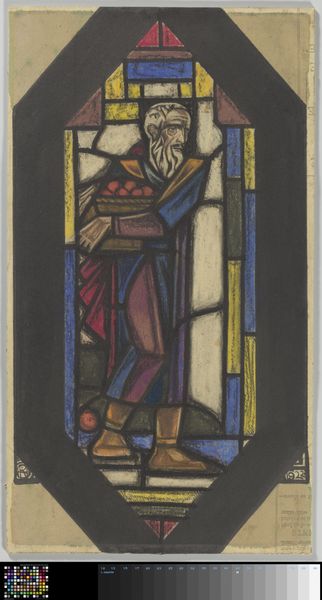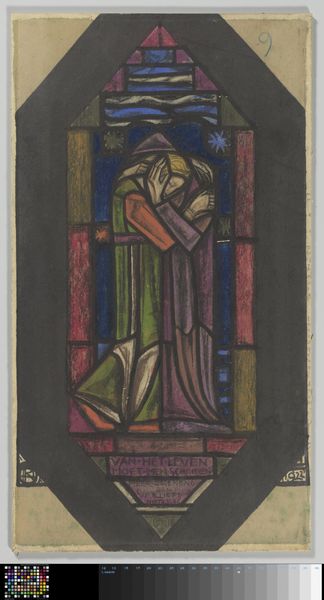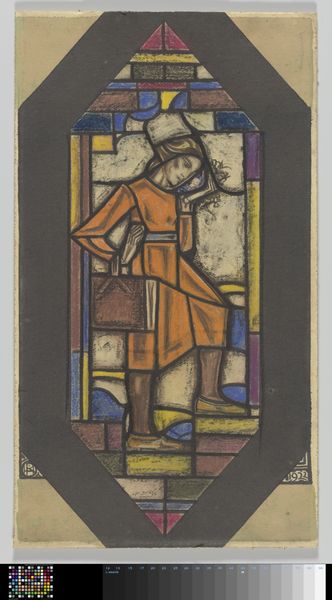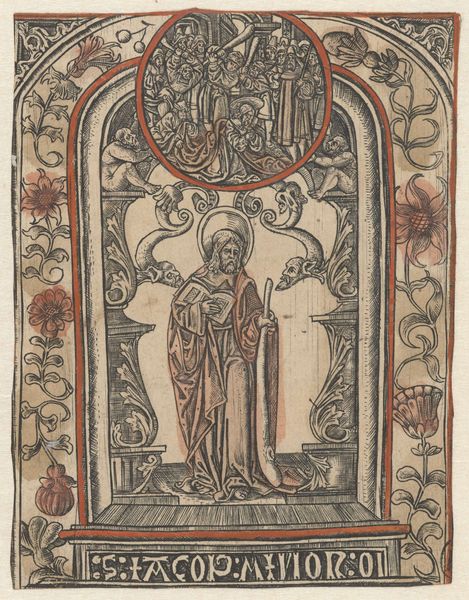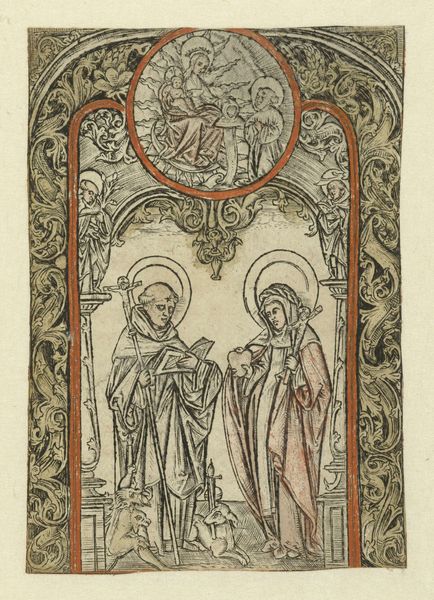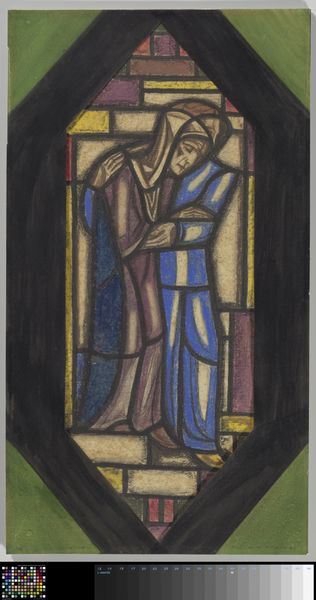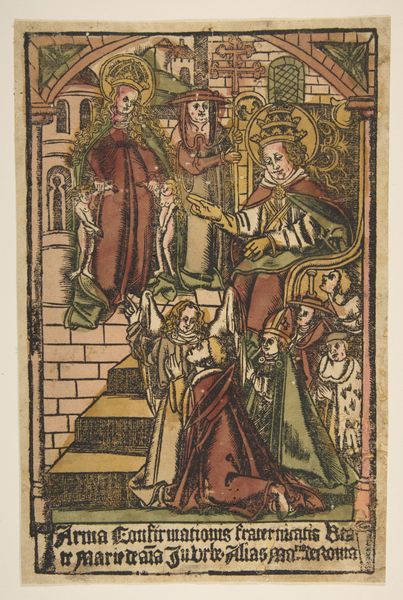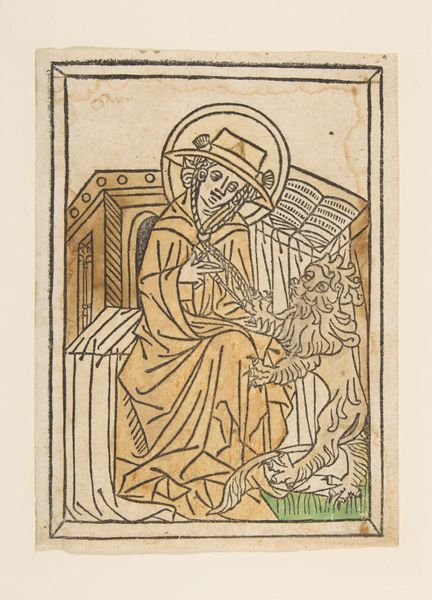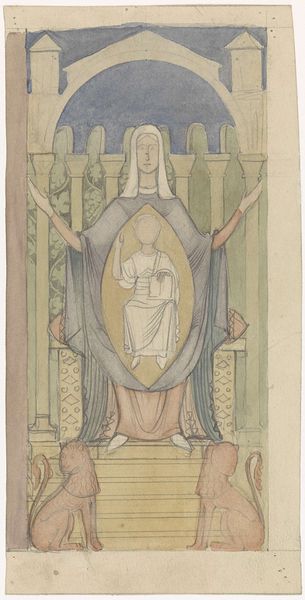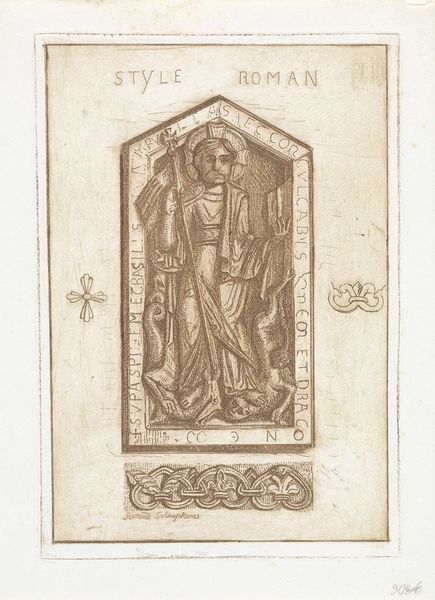
Dimensions: height 685 mm, width 403 mm, height 635 mm, width 362 mm
Copyright: Rijks Museum: Open Domain
Curator: Richard Nicolaüs Roland Holst’s watercolor and drawing from 1922, titled "De trap des levens," which translates to "The Stairway of Life," is on display here at the Rijksmuseum. Editor: Well, my first impression is somber. The color palette is muted, but the stained glass effect is intriguing. What exactly does this "stairway" signify? Curator: Holst was deeply interested in symbolism. He often imbued his works with layered meanings, reflecting societal shifts, the individual's place within a collective, as well as existential anxieties. The imagery in the window-- a man and woman ascending – could reference personal journeys, like moving from lower to middle class via marriage. What’s your perspective? Editor: Visually, the pair ascending suggests something fundamental about aspiration, though what the object they’re carrying together could signify… Perhaps the burdens and aspirations shared in marriage and life. And given it’s a watercolor, its execution on paper brings into focus how materials like watercolor and ink during this period were increasingly being used not just for preliminary sketches, but for the final art product. Curator: Interesting. The lines do recall stained glass. The lead work and segmentation appear very carefully planned, hinting at broader artistic dialogues exploring intersections of industry and spirituality, labor and faith. How the piece reflects art making as process, not just as pure representation. Editor: Perhaps that’s part of its symbolism. Considering this period, shortly after WWI, I see yearning for spiritual comfort after profound material loss; stained glass already bore strong ties to spirituality through religion. Curator: Very insightful. It pushes me to ponder on how its aesthetic links to craft revivals emerging throughout Europe around that time and its embrace of materials considered domestic, blurring lines between private creation and public experience. It's quite complex. Editor: Indeed, viewing through the lenses of process and symbolism has enhanced my understanding. It is never merely aesthetic. Curator: Likewise. The work embodies its age—its dreams, materials, and meanings all tightly interwoven.
Comments
No comments
Be the first to comment and join the conversation on the ultimate creative platform.
